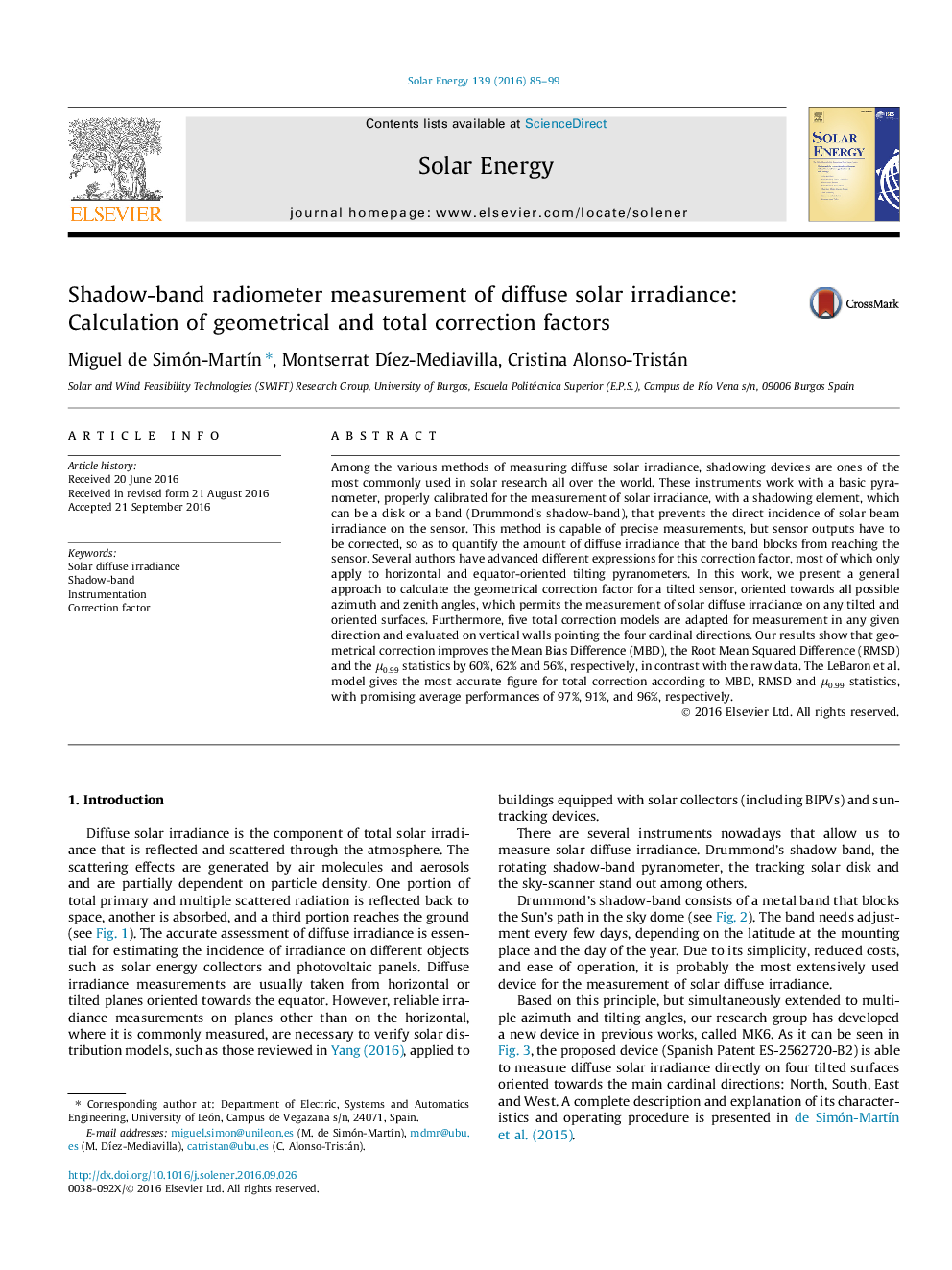| Article ID | Journal | Published Year | Pages | File Type |
|---|---|---|---|---|
| 5451373 | Solar Energy | 2016 | 15 Pages |
Abstract
Among the various methods of measuring diffuse solar irradiance, shadowing devices are ones of the most commonly used in solar research all over the world. These instruments work with a basic pyranometer, properly calibrated for the measurement of solar irradiance, with a shadowing element, which can be a disk or a band (Drummond's shadow-band), that prevents the direct incidence of solar beam irradiance on the sensor. This method is capable of precise measurements, but sensor outputs have to be corrected, so as to quantify the amount of diffuse irradiance that the band blocks from reaching the sensor. Several authors have advanced different expressions for this correction factor, most of which only apply to horizontal and equator-oriented tilting pyranometers. In this work, we present a general approach to calculate the geometrical correction factor for a tilted sensor, oriented towards all possible azimuth and zenith angles, which permits the measurement of solar diffuse irradiance on any tilted and oriented surfaces. Furthermore, five total correction models are adapted for measurement in any given direction and evaluated on vertical walls pointing the four cardinal directions. Our results show that geometrical correction improves the Mean Bias Difference (MBD), the Root Mean Squared Difference (RMSD) and the μ0.99 statistics by 60%, 62% and 56%, respectively, in contrast with the raw data. The LeBaron et al. model gives the most accurate figure for total correction according to MBD, RMSD and μ0.99 statistics, with promising average performances of 97%, 91%, and 96%, respectively.
Keywords
Related Topics
Physical Sciences and Engineering
Energy
Renewable Energy, Sustainability and the Environment
Authors
Miguel de Simón-MartÃn, Montserrat DÃez-Mediavilla, Cristina Alonso-Tristán,
